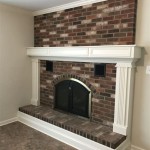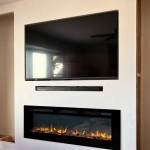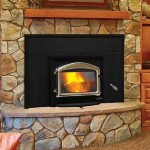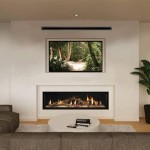Direct Vent Wood Burning Fireplace Insert: A Comprehensive Guide
The direct vent wood burning fireplace insert presents a modern solution for homeowners seeking the ambiance and efficiency of a wood-burning fire within an existing masonry fireplace. Unlike traditional open fireplaces, these inserts are designed to be sealed and vent directly outside through a dedicated vent system. This design significantly improves heating efficiency and reduces the risks associated with smoke and carbon monoxide exposure.
Direct vent technology in wood burning fireplace inserts is a relatively recent innovation. Traditional wood-burning fireplaces suffered from considerable energy loss, drawing heated air from the room and sending it up the chimney. Furthermore, incomplete combustion resulted in smoke and potentially harmful gases entering the living space. Direct vent inserts address these issues by creating a closed combustion system that pulls air from outside for combustion and expels exhaust gases directly outside, separate from the room's air.
Choosing the right direct vent wood burning fireplace insert involves understanding several factors, including heating capacity, venting requirements, installation considerations, and available features. This article will provide a detailed overview of these aspects, enabling homeowners to make informed decisions about incorporating this efficient and aesthetically pleasing heating solution into their homes.
Understanding the Key Benefits of Direct Vent Technology
The primary advantage of a direct vent wood burning fireplace insert lies in its enhanced efficiency compared to traditional open fireplaces. The sealed combustion chamber and dedicated venting system prevent the escape of heated air from the room up the chimney. This results in a significant reduction in heat loss and a more comfortable and consistent room temperature. Direct vent inserts can achieve heating efficiencies exceeding 70%, a substantial improvement over the typical 10-20% efficiency of open fireplaces.
Furthermore, direct vent systems significantly improve indoor air quality. The sealed combustion chamber prevents smoke, carbon monoxide, and other harmful combustion byproducts from entering the living space. Combustion air is drawn from outside, ensuring that the fire receives an adequate supply of oxygen without depleting the air inside the home. Exhaust gases are vented directly outside through the vent system, minimizing the risk of backdrafting and indoor air pollution.
Another key benefit is the increased safety offered by direct vent inserts. The sealed system reduces the risk of sparks and embers escaping the firebox, minimizing the potential for house fires. The controlled combustion process also reduces the buildup of creosote in the chimney, a flammable substance that can lead to chimney fires. Many direct vent inserts are equipped with safety features such as automatic shut-off mechanisms in case of malfunctions or over-pressurization.
Factors to Consider When Choosing a Direct Vent Wood Burning Fireplace Insert
Selecting the appropriate direct vent wood burning fireplace insert requires careful consideration of several factors to ensure optimal performance and safety. The first step is to determine the appropriate heating capacity for the space. This is typically measured in British Thermal Units (BTUs) and should be selected based on the size of the room or area to be heated, the climate, and the insulation levels of the home. A general rule of thumb is to select an insert with a BTU rating that is large enough to heat the desired area without being excessively oversized, which can lead to inefficient operation and overheating.
The size and dimensions of the existing fireplace opening are also critical considerations. Direct vent inserts are designed to fit snugly within the existing fireplace, so accurate measurements are essential to ensure a proper fit. Many manufacturers offer a range of insert sizes and shapes to accommodate different fireplace configurations. It is also important to consider the depth of the fireplace to ensure that the insert can be fully recessed without protruding excessively into the room.
Venting requirements are another essential consideration. Direct vent systems require a dedicated vent pipe that runs directly from the insert to the outside. The vent pipe must be of the correct diameter and material, as specified by the manufacturer, to ensure proper draft and prevent the buildup of creosote. The vent pipe can be run horizontally through an exterior wall or vertically through the chimney. The choice of venting method will depend on the configuration of the fireplace and the surrounding structure. It is crucial to follow the manufacturer's instructions and local building codes when installing the vent system.
Available features can also influence the choice of a direct vent wood burning fireplace insert. Some inserts are equipped with features such as blowers, which circulate heated air into the room, enhancing heating efficiency. Others may include thermostats or remote controls, allowing for precise temperature control. Decorative options, such as different door styles, trim kits, and interior firebox liners, can also be considered to match the aesthetic of the home.
Installation and Maintenance of Direct Vent Wood Burning Fireplace Inserts
Proper installation is crucial for the safe and efficient operation of a direct vent wood burning fireplace insert. It is highly recommended that installation be performed by a qualified professional who is familiar with local building codes and the manufacturer's instructions. Improper installation can lead to safety hazards, such as carbon monoxide leaks or chimney fires, as well as reduced heating efficiency and premature wear of the appliance.
The installation process typically involves preparing the existing fireplace opening, installing the vent system, and connecting the insert to the vent pipe. The fireplace opening may need to be cleaned and inspected for any damage or structural issues. The vent system must be properly sealed to prevent leaks and ensure proper draft. The insert must be securely fastened to the fireplace and properly connected to the vent pipe. A thorough inspection and testing of the installed system should be performed to ensure that it is operating safely and efficiently.
Regular maintenance is essential for ensuring the long-term performance and safety of a direct vent wood burning fireplace insert. The chimney and vent system should be inspected and cleaned annually to remove any creosote buildup. Creosote is a highly flammable substance that can accumulate in the chimney as a result of incomplete combustion. Regular cleaning helps to prevent chimney fires and ensure proper draft. The firebox and door should be inspected for any damage or wear. Worn or damaged parts should be replaced promptly to prevent malfunctions and maintain optimal performance.
The manufacturer's instructions should be followed carefully for cleaning and maintenance procedures. Some inserts require specific cleaning agents or methods to avoid damaging the appliance. It is also important to use only dry, seasoned firewood in the insert. Wet or unseasoned wood can lead to increased creosote buildup and reduced heating efficiency. The ash should be removed regularly to prevent it from accumulating in the firebox and obstructing airflow. A proper ash removal procedure will be outlined in the owner's manual.
Adhering to these installation and maintenance guidelines will help to ensure the safe, efficient, and long-lasting performance of a direct vent wood burning fireplace insert, providing years of warmth and ambiance for the home.
In addition to the above considerations, it's important to factor in the ongoing costs of owning and operating a direct vent wood burning fireplace insert. These costs include the price of firewood, which can vary depending on location and availability, as well as the cost of chimney cleaning and maintenance. It is also worth considering the potential impact on home insurance premiums, as some insurers may charge higher rates for homes with wood-burning appliances.
Despite these costs, many homeowners find that the benefits of a direct vent wood burning fireplace insert outweigh the expenses. The improved heating efficiency, enhanced safety, and aesthetic appeal of these appliances make them a popular choice for homeowners looking to add warmth and ambiance to their homes while reducing their reliance on traditional heating systems.
Ultimately, the decision of whether or not to install a direct vent wood burning fireplace insert depends on individual needs and preferences. However, by carefully considering the factors outlined in this article, homeowners can make an informed decision that will provide years of enjoyment and efficient heating.

Fireplaceinsert Com Kingsman Fireplace Insert Idv36

Rushmore 30 Direct Vent Fireplace Insert Fine S Gas

Oakville Gdix4 Direct Vent Gas Fireplace Inset By Napoleon

Majestic Ruby 35 Direct Vent Gas Insert Ruby35 North Country Fire

25 Ruby Traditional Intellifire Touch Direct Vent Fireplace Insert Blower And Remote Electronic Ignition Majestic

White Mountain Hearth By Empire Comfort Systems Direct Vent Gas Fireplace Insert Loft

30 Ruby Contemporary Intellifire Touch Direct Vent Fireplace Insert Blower And Remote Electronic Ignition Majestic

White Mountain Hearth Rushmore Direct Vent Insert With Truflame Tech Fireplaces Usa

Buy Gas Insert 1 Victory Direct Vent San Francisco Bay Area Ca The Fireplace Element

Napoleon Ascent Dx42 Direct Vent Gas Burning Fireplace
Related Posts








